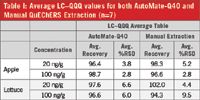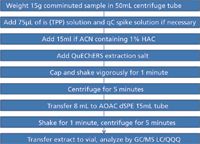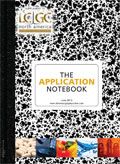Pesticide Analysis Using the AutoMate-Q40: An Automated Solution to QuEChERS Extractions
Sample preparation for multiresidue pesticide screening for agriculture commodities can be cumbersome and laborious for multiple sample extractions. With recent advances in multiresidue pesticide screening, methods have been simplified by the introduction of QuEChERS.
Sample preparation for multiresidue pesticide screening for agriculture commodities can be cumbersome and laborious for multiple sample extractions. With recent advances in multiresidue pesticide screening, methods have been simplified by the introduction of QuEChERS. Either the AOAC Official Method 2007.01, or EN method 15662:2008 requires several manual steps to extract the pesticides of interest (1,2). The AutoMate-Q40 streamlines the QuEChERS method by automating the entire process from homogenate to final extract. All of manual steps including adding acetonitrile (ACN), dispensing buffering salts, shaking, mixing, centrifuging, capping, de-capping, dispersive solid phase extraction (d-SPE) clean up, and finally measuring and delivering the extract. The intent of this study is to evaluate the performance of the AutoMate-Q40, by monitoring pesticide residues in apples and lettuce. The target pesticides will be analyzed using LC–QQQ and GC–MS.
Extraction/Cleanup
Figure 1 shows the flow chart for the AOAC QuEChERS extraction procedure for both the AutoMate-Q40 and the manual extraction.

Figure 1: Flow chart of AutoMate-Q40 AOAC QuEChERS extraction.
Results and Discussion
A precision and accuracy study was performed using both manual and automated QuEChERS extraction for both commodities. A 6 µg/mL stock pesticide standard was used to fortify the samples. Using the AutoMate-Q40, the system spiked the samples with 50 and 250 µL of the pesticide standard yielding 20 ng/g and 100 ng/g check samples. The same process was done for the manual extraction using a microsyringe. These quality control (QC) samples were quantified against their corresponding matrix-matched calibration curves. The analyses was performed in replicates of seven (n = 7).
Table I demonstrates the excellent recoveries achieved when using the AutoMate-Q40, ranging from 96.4% to 98.7%, while the manual QuEChERS extraction had a wider range from 94.3% to 102.0%. The AutoMate-Q40 also demonstrates greater precision ranging from 2.8% to 6.6% RSD while the manual QuEChERS extraction ranges from 2.8% to 9.5% RSD.

Table I: Average LCâQQQ values for both AutoMate-Q40 and Manual QuEChERS Extraction (n=7)
Conclusion
This study demonstrates the feasibility of automating the QuEChERS extraction using the AutoMate-Q40. By automating the liquid handling, addition of salt/buffers, sample mixing, pipetting, and liquid level sensing using the patent pending VialVision™, the extraction process is unattended, more reliable, and easier. This enables time and labor savings, while improving consistency and repeatability of the extraction.
References
(1) AOAC Official Method 2007.07 Pesticide Residues in Food by Acetonitrile Extraction and Partitioning with Magnesium Sulfate. Gas Chromatography/Mass Spectrometry and Liquid Chromatography/Tandem Mass Spectrometry, First Action 2007.
(2) European Committee for Standardization/Technical Committee CEN/TC275 (2008), Foods of plant origin: Determination of pesticide residues using GC–MS and/or LC–MS-MS following acetonitrile extraction/ partitioning and cleanup by dispersive SPE QuEChERS-method.
Teledyne Tekmar
4736 Socialville-Foster Rd., Mason, OH 45040
Tel. (513) 229-7000
Website: www.tekmar.com


.png&w=3840&q=75)

.png&w=3840&q=75)



.png&w=3840&q=75)



.png&w=3840&q=75)














